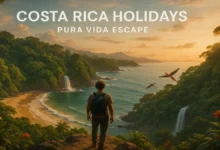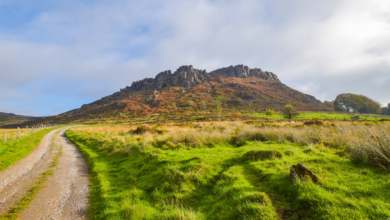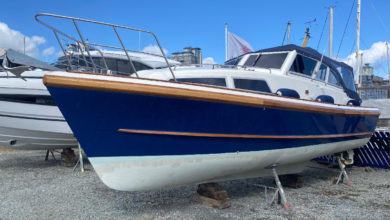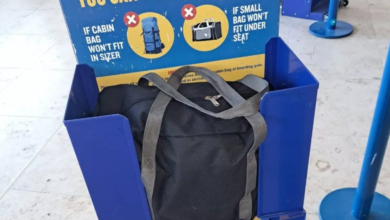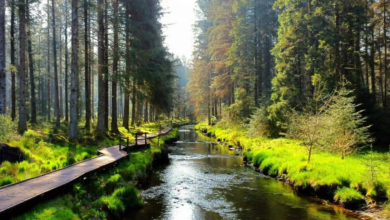Costa Rica Holidays: Your Ultimate Getaway Guide
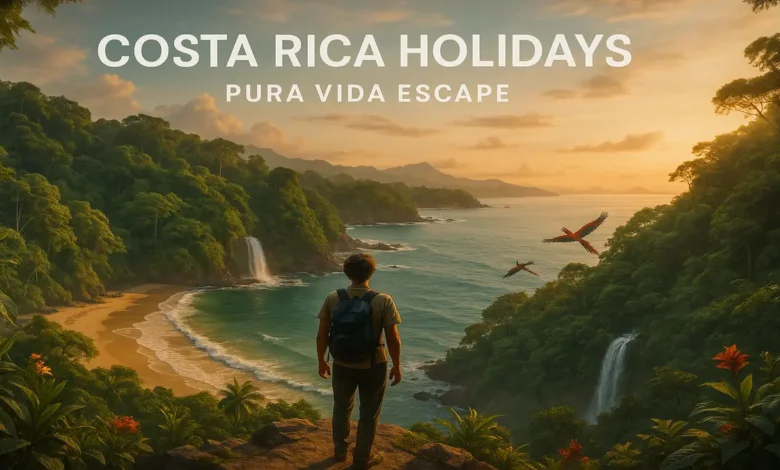
Escape to lush rainforests, volcanoes, and pristine beaches on Costa Rica holidays. Discover how to travel smart, live the pura vida way, and create a trip full of eco-adventures and cultural connection.
When you hear “Costa Rica holidays,” your mind probably pictures tropical beaches, misty jungles, vibrant wildlife, and thrilling adventures. You’re not wrong. Costa Rica offers a compact but breathtaking diversity of ecosystems, from cloud forests to mangroves to volcanoes, all in a relatively small footprint. What’s more, the country has built a reputation around eco-based travel and sustainability, making it a haven for nature lovers. In this guide, I’ll share everything you need to know—how to plan, where to go, what to do, tips and tricks, sample itineraries, and more. Think of this as your comprehensive, friendly expert briefing on making your Costa Rica holidays unforgettable.
Why Choose Costa Rica for Your Holidays
Costa Rica may be small in size, but it is enormous in appeal. One of its greatest draws is ecological diversity. In a single trip, you can snorkel off a Pacific beach, hike through a rainforest, explore a cloud forest, and even bathe near a volcano. The richness of flora and fauna is astounding—Costa Rica contains a surprisingly high percentage of the planet’s biodiversity.
Beyond nature, the country strongly promotes sustainability. Much of its land is protected, and many lodges, tour operators, and national parks emphasize eco-friendly practices. You’ll find initiatives for reforestation, wildlife rescue, and low-impact travel deeply woven into the tourism culture. It’s not just window dressing—it’s real.
Then there’s the spirit of the place. Costa Ricans adopt the phrase pura vida, meaning “pure life,” as a guiding ethos. It’s not just a cliché. It reflects their relaxed, optimistic, and friendly outlook. As a visitor, you’ll feel that rhythm in small towns, over coffee, when chatting with locals, and walking forest trails.
Finally, Costa Rica is a travel destination that balances access and adventure. It’s within reach from many places, and once you’re there, internal connections—though sometimes adventurous—are quite manageable. Roads, domestic flights, shuttles, and boat rides all combine to get you where you want to go. If you want a holiday blending nature, culture, and adventure—with a conscious travel bent—Costa Rica delivers in spades.
Best Time to Visit for Ideal Costa Rica Holidays
Choosing when to take your Costa Rica holidays really depends on your priorities. Do you want sunshine and beach days? Lush greenery and savings? Or something in between? Although Costa Rica doesn’t follow the same seasonal rules everywhere, there are general patterns to guide you.
During the drier months, you’ll enjoy more predictable weather—less rainfall, clearer skies, better hiking conditions, and calmer seas. This tends to be the most popular time for visitors, which means more crowds and higher prices in many hotspots. If you go this route, plan ahead and book lodging and activities early.
In the wetter season—sometimes called the “green” season—you’ll find the country in full bloom. Rain is more frequent, often in short bursts, especially in afternoon or evening. But these rains bring deep greens, dramatic skies, fewer tourists, and lower costs. Many tours and lodges offer discounts or flexible pricing then. The trade-off is occasional showers, muddy trails, and in some regions, roads that are more challenging.
Then there are the transition periods—those windows that blend rain and shine. These can be excellent for balancing visitor levels, cost, and green landscapes. Just know that weather patterns vary by region. The Caribbean side, for instance, often has different rainfall rhythms than the Pacific side. So part of choosing your timing should depend on where in Costa Rica you plan to spend most of your holiday.
In short: if you want mostly sun and beach time, lean toward the drier months. If you don’t mind occasional rain and prefer greener scenery with lighter crowds, the wetter months may suit you best. Either way, carry a light rain jacket—you’ll thank yourself when the skies decide to open.
Regions & Highlights: Where to Go During Costa Rica Holidays
Costa Rica is naturally divided into regions, each offering unique landscapes, climates, and activities. Here’s a breakdown of standout regions and what you can expect from them on your Costa Rica holidays.
Central Valley & San José
Your journey often begins in San José, nestled in the Central Valley. The city is surrounded by rolling hills, coffee plantations, and volcanic terrain. While it’s rarely the highlight of the trip, it’s a useful base for the first or last day. You can stroll through local markets, visit museums or art galleries, and get a feel for urban Costa Rican life. The Central Valley also serves as a transition area—you’ll ascend or descend through this zone when heading to higher mountains or coastal plains.
Arenal / La Fortuna Region
In the northern part of the country, the Arenal volcano and the town of La Fortuna form a magnet for travelers. The region is popular because it offers a wealth of adventure and relaxation in proximity. You can hike trails surrounded by old lava flows, explore suspension bridges, go ziplining, canyoning, and at night soak in hot springs warmed by geothermal activity. The mix of greenery, volcanic features, and wildlife makes it a great hub for nature lovers.
Monteverde & Cloud Forests
If you like cooler air and mystical forests, Monteverde is a dream. High in the hills, cloud forests offer a surreal environment: mist swirling among mossy trees, orchids dripping from branches, and curious creatures like quetzals and frogs hiding in the foliage. Walking trails, canopy tours, hanging bridges, and night walks are among the must-do experiences here. You’ll feel like you’ve stepped into another world.
Pacific Coast & Guanacaste / Manuel Antonio
On the Pacific side lies sun, beaches, and shoreline adventures. The province of Guanacaste is more arid and sunny, making it ideal for beach lovers and surfers. The Manuel Antonio area blends rainforest and beach seamlessly—hiking trails and wildlife spots often border coastal scenery. It’s an excellent region for combining forest and sea in one stretch of travel.
Osa Peninsula & South Pacific
For travelers who want the wild, untamed side, the Osa Peninsula and the South Pacific region deliver big time. This is where you’ll find remote rainforest, secluded beaches, rivers, and some of the most biodiverse terrain in the country. Corcovado National Park is often hailed as one of the most biologically intense places on earth. Wildlife encounters are abundant here—so are opportunities for immersion and solitude.
Each region has its own microclimate, pace, and flavor. You can base yourself in one place or weave through many, depending on how adventurous you want your Costa Rica holidays to be.
What to Do & See on Costa Rica Holidays
One of the richest parts of any Costa Rica holiday is the breadth of activities on offer. Whether you’re after adrenaline or serenity, you’ll find plenty. Below is a sample of what you can do and see, organized by type of experience.
Wildlife & Nature Encounters
Costa Rica is a wildlife lover’s paradise. Birdwatching, frog spotting, sloth sightings, monkeys swinging through canopies—these are daily possibilities. Guided nature walks in reserves and national parks help you spot creatures you might never see on your own. Night tours are especially fun: frogs, insects, snakes, and nocturnal mammals come alive.
You’ll also want to explore mangroves, wetlands, and rivers. Paddle tours or boat rides through canals or estuaries allow up-close views of crocodiles, herons, caimans, and exotic fish. Eco tours often include a mix of habitats so you see creatures from different environments.
Volcanoes, Hot Springs & Geothermal Wonders
Costa Rica’s volcanic activity adds drama to any holiday. Arenal is a popular volcano with trails across lava rocks and scenic viewpoints. Many regions have hot springs heated by geothermal activity. There’s nothing quite like soaking in warm mineral water under a blanket of stars or surrounded by jungle sounds.
Other volcanic features include fumaroles, mud pools, and sulfur vents. Some tour operators will combine volcano hikes with waterfall treks or canopy zipline segments, giving you varied perspectives on volcanic landscapes.
Hiking, Trails & Canopy Walkways
Trails are everywhere, from gentle rainforest strolls to full-blown mountain treks. Some lead to waterfalls, others cross hanging bridges or tunnels through forest. In cloud forests, skywalks or elevated walkways let you wander among treetops. There are trails geared to all fitness levels—just know that in wetter months, trails may be muddy or slippery.
If you’re up for it, you can plan multi-day treks, staying in huts in national parks, or backcountry routes along ridgelines and coasts. These give you the chance to see less visited corners of Costa Rica.
Beaches, Surfing & Marine Experiences
Costa Rica has both Pacific and Caribbean coasts, each with its own vibe. Swimming, snorkeling, and surfing are top draws. In some areas, you can charter boats to go deeper out, snorkel reefs, or dive with rays and sharks. In other coastal zones, sea turtle nesting is a highlight—observing hatchlings or mother turtles is unforgettable (with a responsible guide).
Mangrove and estuary tours along the coasts bring you into the mix of saltwater, forests, and wildlife. Kayaking, paddleboarding, and standup paddle are common options in calmer waters.
Waterfalls, Rivers & Canyoning
Water is everywhere in Costa Rica—if you love waterfalls, you’re in heaven. Trails lead to cascades tucked in forests, sometimes with swimming holes. Canyoning (rappelling down waterfalls) is a thrilling option for adventurous travelers. Rafting is also popular in jungle-rivers of moderate rapids.
Whitewater rafting, tubing, and riverboarding feature in many multi-day and day tours. The fun is not just in fast water; paddle journeys through calmer stretches let you take in jungle scenes, birds, and hidden corners.
Cultural & Local Immersion
Don’t neglect cultural aspects on your Costa Rica holidays. Visit nearby towns, artisan markets, coffee farms, and local communities. Coffee tours show the process from bean to cup. Food markets and cooking classes allow you to taste and learn local cuisine—gallo pinto, fresh seafood, tropical fruit, and more.
Participating in local festivals, small farm stays, or community-based tourism gives you deeper insight into local life. Many lodges partner with communities to support education, organic farming, and conservation. These experiences transform a holiday into meaningful exchange.
How to Plan & Organize Your Costa Rica Holidays
To make your Costa Rica holidays truly smooth and rewarding, good planning is key. Here are the main elements to get right.
Choosing Your Duration & Pace
How many days should you stay? That depends on how many regions you want to cover and how much rest you want. A week gives you a taste—perhaps one volcano, one coastal zone, some forest. Two weeks or more allow you to cross from the Pacific to the Caribbean side, or add more remote corners.
Avoid trying to cram too many places in too short a time. Travel between regions, especially in mountainous or jungle terrain, can take longer than you expect. Give buffer days for rest or delays.
Building an Itinerary Flow
You’ll want a logical route so you aren’t doubling back or spending too much time in transit. For instance, arrive in the Central Valley, then head up to volcano/canopy regions, then descend to the coast, or do coast first and then inland. Choose your landing city and exit city based on your planned loop—sometimes it’s better to fly domestic and skip a long road leg.
Leave wiggle room in your itinerary. Unexpected weather, delays, or newfound places can tempt you to linger. Having a buffer day or two gives you flexibility. Also build in “rest days”—moments of ease between adventurous stretches.
Transport & Getting Around
Getting in usually means an international flight into the main airport. From there, domestic flights, private shuttles, shared vans, buses, or sometimes boats get you to your destinations. Roads in mountainous or rainforest areas may be steep or rough; sometimes they require 4x4s or local transfers.
Domestic flights can save you time for longer distances, though they tend to cost more. Shuttle services are popular and relatively reliable for main tourist routes. Buses are cheapest but slower and less flexible. If you’re comfortable driving in tropical, sometimes muddy, conditions, renting a 4×4 is an option—but check local insurance and road conditions.
Accommodation Options
Costa Rica caters to many budgets and styles of travel. You’ll find everything from hammock-and-bungalow jungle lodges to luxury eco-resorts. Many lodges are small and eco-oriented, blending with nature. Reservations are especially important during popular travel months.
If you like variety, you can mix rustic stays in forest lodges with beachside resorts. Staying close to national parks or trailheads gives you a head start for morning excursions. Also consider mid-range guesthouses in local towns to support communities and enjoy local flair.
Tours, Guides & Permits
In many protected areas, you’ll need to hire a local certified guide to enter trails. Every tour operator is not equal—look for those that practice responsible tourism, support local communities, and maintain good environmental practices. Always check what’s included: transport, meals, gear, snacks, water, etc.
Some parks require advance booking or permits (especially for overnight treks). National park rules often limit group sizes, enforce set trails, and require guides. Always confirm in advance for the areas you plan to visit.
Packing & What to Bring
Packing smart is crucial. Essentials include:
- Lightweight, quick-dry clothes
- Rain jacket or poncho
- Good hiking shoes (waterproof if possible)
- Swimwear
- Mosquito repellent
- Sun protection: hat, sunscreen, sunglasses
- Reusable water bottle and water purification method
- Headlamp or flashlight
- Binoculars and camera
- Insect net or light mesh protection
- Dry sacks or plastic bags for gear protection
Also, bring some cash for smaller towns or entrance fees (not all places take cards). A basic first aid kit and any personal medications are important. Keep in mind luggage weight if you will use small domestic flights.
Sample Travel Themes & Itineraries
Depending on your interests, you can theme your Costa Rica holidays in various ways. Here are some possibilities and sample flows.
Adventure & Active Nature Trip
Focus your trip on hiking, ziplining, rafting, canyoning, and wildlife. Start inland with volcano country and cloud forests, then finish on a coast for kayaking or snorkeling. Plan pivotal days for trekking, whitewater, and a few relax days to recharge.
Wildlife & Botanical Discovery
Here, your goal is creature spotting: birds, frogs, mammals, reptiles. Stay in biodiversity hotspots like rainforests and wetlands. Book guides known for their attentiveness to subtle creatures. Visit reserves, national parks, and hidden trails. Include night walks, canopy tours, and waterway explorations.
Beach & Relaxation with Nature Touch
If your priority is ocean, sun, and chill, pick a coastal base or two and weave in rainforest day trips. Opt for lodges that merge beach access with forest trails or mangrove tours. Balance downtime with easy forest walks, sunset cruises, or turtle watching.
Cultural & Community Connection
Add to your holiday stops in small towns, cooperative stays, organic farms, artisan workshops, and local food immersion. Participate in cooking classes, meet local farmers, stay in community lodges, and support conservation initiatives.
Whatever theme you pick, be flexible. Your favorite moment may come unexpectedly.
Tips & Advice for Smarter Costa Rica Holidays
Here are practical tips to make your holiday smoother, more authentic, and rewarding.
- Travel slow when possible. Rushing means you’ll see less and feel more fatigued.
- Book in advance during peak travel windows. Lodges and tours fill fast.
- Prioritize a few regions over trying to see the whole country.
- Ask local people for hidden spots and insider tips—they often yield the most memorable experiences.
- Embrace early mornings. Wildlife is most active then, and light is best.
- Respect park rules and stay on trails—some habitats are fragile.
- Use reef-safe sunscreens and avoid single-use plastics.
- Carry a daypack for excursions.
- Always carry rain protection—even in dry months—because tropics can surprise you.
- Don’t underestimate travel times—roads may be slower than maps imply.
- Get travel insurance that covers medical evacuation and tropical conditions.
- Learn a few Spanish phrases—it helps and earns smiles.
- Offline maps, local SIM or eSIM, or GPS help in remote regions.
- Always have local currency for small towns and park fees.
With these in mind, your Costa Rica holidays are more likely to be smooth, safe, respectful, and deeply fulfilling.
Managing Costs & Budgeting
Costa Rica holidays can be scaled in many ways—from budget travel to high-end eco resorts. Understanding the major cost buckets helps you tailor your budget.
Accommodation & Lodging
You can find basic guesthouses in smaller towns that are very affordable, especially in less touristy areas. Mid-range lodges, boutique eco-lodges, and forest cabins fill the middle spectrum. Upscale resorts, beachfront properties, and luxury eco-lodges command higher rates. Your choice will largely depend on region, season, and remoteness.
Food & Dining
Eating locally helps your budget. You’ll find small sodas (local eateries) serving tasty traditional meals at modest rates. At resorts or upscale restaurants, prices rise. A mix is smart—indulge in nicer meals occasionally, and eat like a local elsewhere. Try street food, fresh fruit, seafood, and regional specialties.
Tours & Activities
Guided tours (wildlife hikes, zipline, rafting, canyoning, snorkel trips) often form a significant share of your budget. In peak times, rates are higher. If you combine independent and guided experiences, you can save. Multi-activity packages may give you some savings. Also, traveling in small groups or sharing can help.
Transport & Transfers
Domestic flights, airport transfers, private shuttles, boat rides, or car rentals all add cost. Choosing shared shuttles or buses where practical saves money. However, if you value time, paying more for fast transport may be worthwhile. Factor in fuel, tolls, driver fees, and insurance.
Miscellany & Contingencies
Entrance fees, tips, gear rentals, souvenirs, health items, extra snacks, and small surprises can creep up. Always set aside a little buffer. In remote areas, goods often cost more, so be ready for price differences.
By deciding where to splurge (unique lodges, signature tours) and where to economize (meals, shared transport), you can shape a Costa Rica holiday that fits your financial comfort zone.
Challenges & Pitfalls (and How to Avoid Them)
No destination is perfect, and Costa Rica holidays have their quirks. Knowing them ahead of time helps you dodge frustration.
Rain & Weather Surprises
Even in drier months, tropical showers can sneak in. In wet season, heavy rain may affect outdoor plans, make roads muddy, or cause trail closures. To mitigate this, keep your schedule flexible and avoid cramming everything in one day.
Road Conditions & Travel Times
Mountains, jungle terrain, potholes, switchbacks—roads can be slow and tricky. Don’t assume distances equate to quick drives. Always allow buffer time, especially between regions. In heavy rain, certain rural roads may become impassable.
Overbooking or Overplanning
Trying to pack too many destinations, tours, or long travel legs back to back often results in exhaustion or disappointment. You might end up skipping things or spending excessive time on the road. Better to do fewer places well.
Wildlife Disappointment & Expectations
Nature doesn’t follow a schedule. You might go looking for a sloth and not see it, or expect to hear loud howler monkeys every dawn and hear silence. Seasonal migrations, rain, or time of day can affect sightings. Use guides with good reputations, go during optimal times, and manage expectations.
Health & Insects
Mosquitoes, biting insects, sun exposure, occasional tropical illnesses—take precautions. Use repellent, wear protective clothing, be cautious about water and food, and stay updated on recommended vaccinations or medical advice for tropical regions.
Language & Communication
While tourism zones often have English speakers, many rural or less visited areas operate in Spanish. Having some Spanish helps with simpler travel, bargaining, and connecting with locals. Offline maps and translation apps are handy, especially off the beaten path.
Environmental & Ethical Concerns
Some operators cut corners. Make sure your tour provider is environmentally responsible, pays staff fairly, avoids disrupting wildlife, and supports local communities. Avoid any activity that seems exploitative. Favor businesses that give back.
Awareness of these challenges, plus some flexibility, will help your Costa Rica holidays go smoothly and feel deeply rewarding.
Quote from a Seasoned Traveler
“In Costa Rica, you realize that nature has no rush—when you quiet your pace and listen, the forest reveals its heart.”
This sentiment often comes from people who set out seeking big thrills but find quiet moments—listening to frogs, watching butterflies, feeling rainforest mist—become their most treasured memories.
Table: Region vs Highlights for Costa Rica Holidays
| Region | Landscape & Climate | Key Activities | Wildlife & Features |
|---|---|---|---|
| Central Valley / San José | Upland, mild climate | Museums, markets, coffee tours | Birds, local flora |
| Arenal / La Fortuna | Rainforest, volcanic | Volcano treks, hot springs, zipline | Frogs, monkeys, tropical birds |
| Monteverde / Cloud Forest | Misty cloud forests | Canopy walks, night walks, orchids | Quetzals, hummingbirds, frogs |
| Pacific Coast / Guanacaste / Manuel Antonio | Beaches, coast | Surfing, snorkeling, beach rest | Marine life, shorebirds, tide pools |
| Osa Peninsula / South Pacific | Dense rainforest, remote | Deep nature treks, wildlife tours | Jaguars (rare), tapirs, abundant biodiversity |
This table is a quick reference to help you choose your destinations based on what you hope to see and experience.
Frequently Asked Questions (FAQs)
What is the ideal duration for a Costa Rica holiday?
A trip of ten to fourteen days is ideal to experience a few regions without rushing. But even a week can give you a strong taste if you concentrate. The key is not to overextend your itinerary so you can savor each place.
Do I need a guide everywhere?
In many national parks and protected areas, guided walks are required or strongly recommended. Outside of parks, you can explore on your own, but a good guide often spots wildlife you’d miss and adds depth to the experience.
Is Costa Rica safe for solo or female travelers?
Costa Rica is among the safer countries in Central America for tourists. As with all travel, practice common sense. Stay aware of your surroundings, avoid isolated areas at night, secure valuables, and follow local advice. Many women travel solo without issue.
How good is connectivity & internet service?
In towns, resorts, and major tourist zones, internet access is decent. In remote forest lodges or deeper jungle regions, connection may disappear or be very slow. Plan accordingly—download maps, guides, and offline tools ahead of time.
Is tipping expected?
Yes, tipping is customary, especially for guides, drivers, and good service. It’s part of local traveler culture. Check what’s included, but be ready to tip for exceptional service.
Do I need special vaccinations or health precautions?
Before visiting tropical regions, consult a travel clinic. Vaccinations such as for hepatitis, yellow fever (depending on your origin), and routine shots are often recommended. Use insect repellent, drink safe water, avoid risky food, and carry basic first aid.
What’s the currency and payment options?
The local currency is the Costa Rican colon, but U.S. dollars are often accepted in touristic areas. Credit cards are used widely in towns, but smaller places, remote lodges, or park entrances might only accept cash. Always carry some local cash.
How mobile is internal transport?
Transport options include local buses, private shuttles, domestic flights, 4×4 rentals, and boats (in coastal or riverine areas). Choice depends on budget, comfort level, and how much time you want on the road.
What wildlife should I realistically expect to see?
Expect common rainforest species—monkeys, iguanas, frogs, tropical birds, butterflies. Seen big mammals like jaguars or tapirs? Possible in very remote zones, but less common. Wildlife tours maximize your chances.
Is Costa Rica expensive compared to other Central American countries?
Costa Rica is on the higher end in the region, especially in peak season, premium lodges, or remote areas. But with smart planning, using local eateries, shared transport, and mixing modest lodgings, you can keep costs reasonable.
Conclusion
Costa Rica holidays are a rich tapestry of rainforest, volcano, beach, wildlife, and culture. With its dedication to conservation, welcoming spirit, and sheer biological variety, this country invites you to slow down, observe, and rejuvenate. While challenges—rain, rough roads, crowded hotspots—exist, flexible planning, consciousness, and a light touch make such obstacles part of the journey, not a barrier.
Go with curiosity, leave room for serendipity, and embrace pura vida. Your Costa Rica holidays will likely become some of your most vivid, inspiring travel memories.
